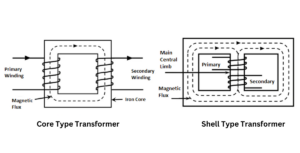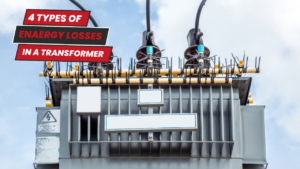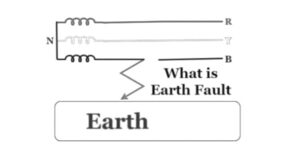From lighting up our homes to driving industrial processes, electrical power has become an indispensable force that fuels our modern lifestyle and empowers countless industries.
Transformers are static devices vital in boosting voltage stability and powering various industrial and residential electric appliances and systems. Efficiently transferring electrical power in different circuits, transformers enable the seamless functioning of essential systems and appliances, shaping how we live, work, and interact with the world.
To comprehend Step-Up Transformer applications, let us understand the fundamentals of Step-Up and Step-Down Transformers.
Step-Up Transformer
A Step-Up Transformer is designed to increase the voltage while reducing the current. By utilising the principle of electromagnetic induction, a Step-Up Transformer converts low voltage and high current from the primary side into high voltage and low current on the secondary side. This increase in voltage is beneficial for various applications that require higher voltage levels, such as long-distance power transmission, industrial machinery and high-voltage power supplies. Step-Up Transformers provide effective power transmission and distribution while avoiding losses due to wire resistance by increasing the voltage.
Step-Down Transformer
A Step-Down Transformer changes a high voltage and low current input into a low voltage and high current output on the secondary side by reducing the voltage while improving the current. A changing current in the primary coil induces an electromotive force (e.m.f) in the secondary coil, resulting in voltage adjustments. In power distribution networks, Step-Down Transformers are frequently used to lower the voltage from high transmission levels to safe and useful levels for consumer usage.
Discover more: Understand The Key Differences Between Step Up and Step Down Transformers
Structure of Step-Up Transformer
A Step-Up Transformer consists of several key components that work together to facilitate voltage transformation.
Core, a main component, is typically made of laminated iron or steel sheets. It provides a low-reluctance path for the magnetic flux generated by the transformer. The laminated structure helps reduce energy losses due to eddy currents within the core material. The core in a Step-Up Transformer is designed to increase the voltage from the primary to the secondary side, which is insulated to prevent electrical leakage. The two most common designs of transformer construction related to the core are:
- Closed-core Transformer: The primary and secondary windings of a closed-core Transformer, also known as a core-form Transformer, are wound around the outer edge of the core ring. This design allows for efficient magnetic coupling between the windings and the core.
- Shell-core Transformer: A type of Transformer construction where the core encircles the winding of the transformer. It consists of a laminated magnetic core with three limbs (legs) that increase the mechanical strength of the core and provide improved protection to the windings from external mechanical shocks.
Windings refer to the insulated coils of wire that are wrapped around the core of the transformer and aid in transformer cooling. The transformer consists of two sets of wire windings wrapped around the core. The primary winding is connected to the input voltage source, while the secondary winding is connected to the load or the output circuit. The number of turns in the two windings specifies the transformer’s tun ratios and voltage transformation capabilities. Transformer winding configurations can differ based on the application. A transformer with several windings is possible, with one winding being a Step-Up and the other being a Step-Down. It allows the formation of multiple output voltages from a single transformer.
Step-Up Transformer requires other components, such as a tap changer, which allows for adjusting the turn ratio between primary and secondary windings. To dissipate heat produced during operation, cooling systems such as cooling fins and oil-filled tanks are built.
Step-Up Transformer Working Principle
The working principle of a Step-Up Transformer is based on Faraday’s Law of electromagnetic induction, where an alternating current flows to the primary coil, creating a magnetic field that changes direction depending on the alternating current and generates a voltage in the secondary coil.
The ratio of the turns in the secondary coil to the turns in the primary coil influences the voltage induced in the secondary coil as the secondary coil has more turns than the primary coil producing a higher voltage in the secondary coil.
Suppose we have a Step-Up Transformer with the primary coil (input side) that has 100 turns and a secondary coil (output side) that has 500 turns. The primary coil is connected to a power source with an input voltage of 150 volts. The turns ratio is 1:5, so the voltage power will be increased by a factor of 5.
Calculation of output voltage
–Input Voltage: 150 volts
–Turns Ratio: 1:5
- Output Voltage = Input Voltage × Turns Ratio
= 150 volts × 5
= 750 Volts
The example demonstrates how a Step-Up Transformer can boot voltage levels based on the number of turns in primary and secondary coils.
Applications of Step-Up Transformers
Step-Up Transformers are widely used in both residential and industrial settings, where they play a significant role in boosting voltage levels for various electrical devices. Move further to explore the common applications of Step-Up Transformers in homes and industries.
In Homes
- Electrical Substations: Step-Up Transformers in electrical substations ensure the reliable and efficient transmission of electricity, enabling the distribution of power to homes and businesses. They are primarily used to increase the voltage levels for efficient transmission of electrical power over long distances.
- High-Intensity Lighting: Stadiums, theatres, and outdoor lighting systems all use Step-Up Transformers in many ways. To fulfill the higher voltage needs of electrical instruments, these transformers increase the voltage from the primary power source. They ensure these gadgets receive the required voltage, enabling them to operate at their best.
- Renewable Energy Systems: A Step-Up transformer is often used to boost the voltage produced by a home’s own energy-generating appliances, such as solar panels or wind turbines, before feeding it into the grid or storing it in batteries. Power may be transmitted more effectively due to this rise in voltage.
- High-Voltage Appliances: Higher voltages may be necessary for some specialised appliances, such as specific industrial or commercial equipment, to function properly. In these circumstances, a Step-Up Transformer may be used to boost the voltage provided to the appliances in question while still maintaining their efficient and secure operation.
- Research and Development: Step-Up Transformers are used in research and development laboratories and facilities to supply higher voltages for experimental setups and testing. They allow researchers to undertake high-voltage investigations and experiments, such as high-energy physics experiments, electrical component testing, and high-voltage equipment calibration.
In Industries
- Industrial machinery: Since heavy machinery requires high voltage, large-scale industries facilities are one frequent application. Step-Up Transformers are used to raise the voltage from power distribution system to the precise voltage that industrial equipment requires. This ensures that the equipment receives the power it requires to function reliably and properly.
- Welding and Metal Fabrication: In arc welding machines, such as TIG (Tungsten Inert Gas) or MIG (Metal Inert Gas) welders, a Step-Up Transformer is usually employed. The transformer creates an electric arc that melts and fuses metal components together by increasing the voltage. Step-Up Transformers are used in metal fabrication equipment such as plasma cutters and spot welders.
- High voltage power transmission: Step-Up Transformers play a crucial role in increasing the voltage level of electrical power generated at power plants for efficient long-distance transmission applications. By stepping up the voltage, the power losses due to resistance in the transmission lines can be minimized, allowing for the efficient transfer of electricity over vast distances.
- X-ray Machines: High voltage is required by X-ray machines to create the necessary energy to produce X-rays. It is often necessary to use an external transformer to enable the X-ray tube to produce the high-energy photons required for imaging. This increased voltage allows electrons to generate enough energy to penetrate the body and provide detailed pictures utilised in medical diagnostics.
- Railways: Electric locomotives or electric multiple unit (EMU) trains require high voltage to efficiently power their motors. Step-Up Transformers are used in railway substations or power generating stations to increase the voltage for overhead catenary systems. This allows the trains to travel at higher speeds while also providing enough power for efficient operation.
Considerations when selecting a Step-Up Transformer.
Several factors should be considered while purchasing a Step-Up Transformer to ensure the best fit for the application. The following points need to be considered before selecting a Step-Up Transformer.
- Determine the required output voltage for the selected application.
- Evaluate the power rating or capacity of the transformer to ensure it can handle the load and provide sufficient power for the equipment or system.
- Look for a transformer with high efficiency to minimize energy losses during the conversion process.
- Consider the physical dimensions and weight of the transformer to ensure it can be accommodated within the available space.
- Look for reputable manufacturers or suppliers that offer reliable products with a proven record of accomplishment.
- Ensure that the Step-Up Transformer meets the necessary safety standards and regulatory requirements for the intended application.
- Evaluate the cost-effectiveness of the transformer by considering its initial purchase cost, maintenance requirements, and operational efficiency.
- Consider the availability of technical support and after-sales service from the manufacturer or supplier.
Conclusion
Step-Up Transformers are essential for ensuring effective and safe electrical operations in residential and industrial settings due to their versatility, dependability, and ability to satisfy specific voltage needs. Whether you are a curious homeowner or an industry professional seeking a dependable transformer, we, at Grant Transformer are dedicated to delivering exceptional products and services for your day-to-day life usage. Our transformers are designed to meet industry standards and are manufactured using top-quality materials, ensuring durability and efficiency. Get in touch with us to learn more about Step-Up Transformers.



